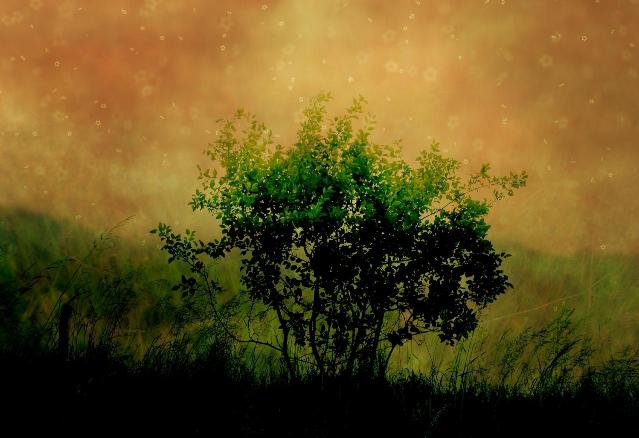I was toying with TSK Exercise 25 – Intimacy, while watching young birds dancing between green leaves in tree branches, thinking “That too is ‘I’,” and in doing so, the focus that I was holding seemed to expand, encompassing much more; not simply an opening field of vision, but sound and tactile sense fields were included resulting in a sense of full presence. There was a kind of joining of bystanders, and outside-standers, and a sense of no separation or distance. But it wasn’t really my intent to work with this exercise. I had intended to explore TSK Ex. 26 – Transcendence of Pointings, to see if I could apprehend how the mental and the physical are mutually pointing.
I wanted to test the read-out rules to see for myself if no read-out established any other. Then, I realized that the intimacy I experienced as described above, was a transcending of pointings. Initially, ‘birds dancing between the leaves in the tree branches‘ was a series of first-level pointings. The pointings included read-outs of distance, colors, sizes, and types, between objects and qualities in a background field of vision as the scene was changing; distinctions in succession, presumed separate from the one apprehending. I was reminded of the following passage from KTS pp. 423-4:
“As the act of knowing unfolds, the image also projects itself into those patterns, contributing the direct ‘feedback’ of immediate experience. In this sense, the image of the object can be said to understand itself, in a process that develops sequentially in accord with ‘feedback’ and repetition. The object in being known reflects the interpretive structure that knows it; the subject in knowing the object is modified by the object it knows.”
And so the read-out process went on in a continuous flow of cognition, measured from a bystander position ‘here‘ that was presumed to be fixed. But when the thought came, “That too is ‘I’,” it was as if a contracting muscle relaxed, and there was a relinquishing of the narrow individual and serial pointing. There was no sense of sameness, or distinctions based on meanings, or any sense of a separate ‘here‘. This does not mean that read-outs of movement, color, and form were not apprehended, it’s just seemed that while the read-out process establishing meaning and connecting points was happening, there was no more weight given to a focus ‘here‘ establishing pointing.
Relinquishing of position, reminded me of that swoop and sweep feeling of opening into depth and breadth of experience, which is also like the ‘generating space‘ exercise where knowingness expands through awareness of overlapping sense fields.
The logos seems to, at first-level, provide for ‘me as sense maker,’ the maker or discoverer of meaning, grounded in the unknown in a search for the known, and at second-level a more immediate participation fully present with what is arising with less weight given to the read-out results, yet still holding open the unknown of further possibilities. There is a kind of trust and welcoming of what time is presenting as space opens, and knowing appreciates and participates in the show without fixing a commitment to conclusions, or final answers. So the focus on ‘birds dancing between the leaves in the tree branches‘ became an open exploration of the space within which these appearances arose as a presentation of time in a multidimensional way, there was appreciation of more than only the specific things mentioned, such as other sensing of sounds and feelings, and the delightful arisings of time-space-knowing without a subject controlling how they were to be fixed and noted.
Regarding ‘no subject ordering experience,’ there seemed to be levels of it, one where there was a mindful awareness of an ordering of experience going on (read-outs and in-puts) that was not being controlled by a separate self (where objects knew themselves), and at a more open and deeper level there was simply witnessing; at that level nothing seemed connected or disconnected. There was just appearance, like ripples on still water.
David

